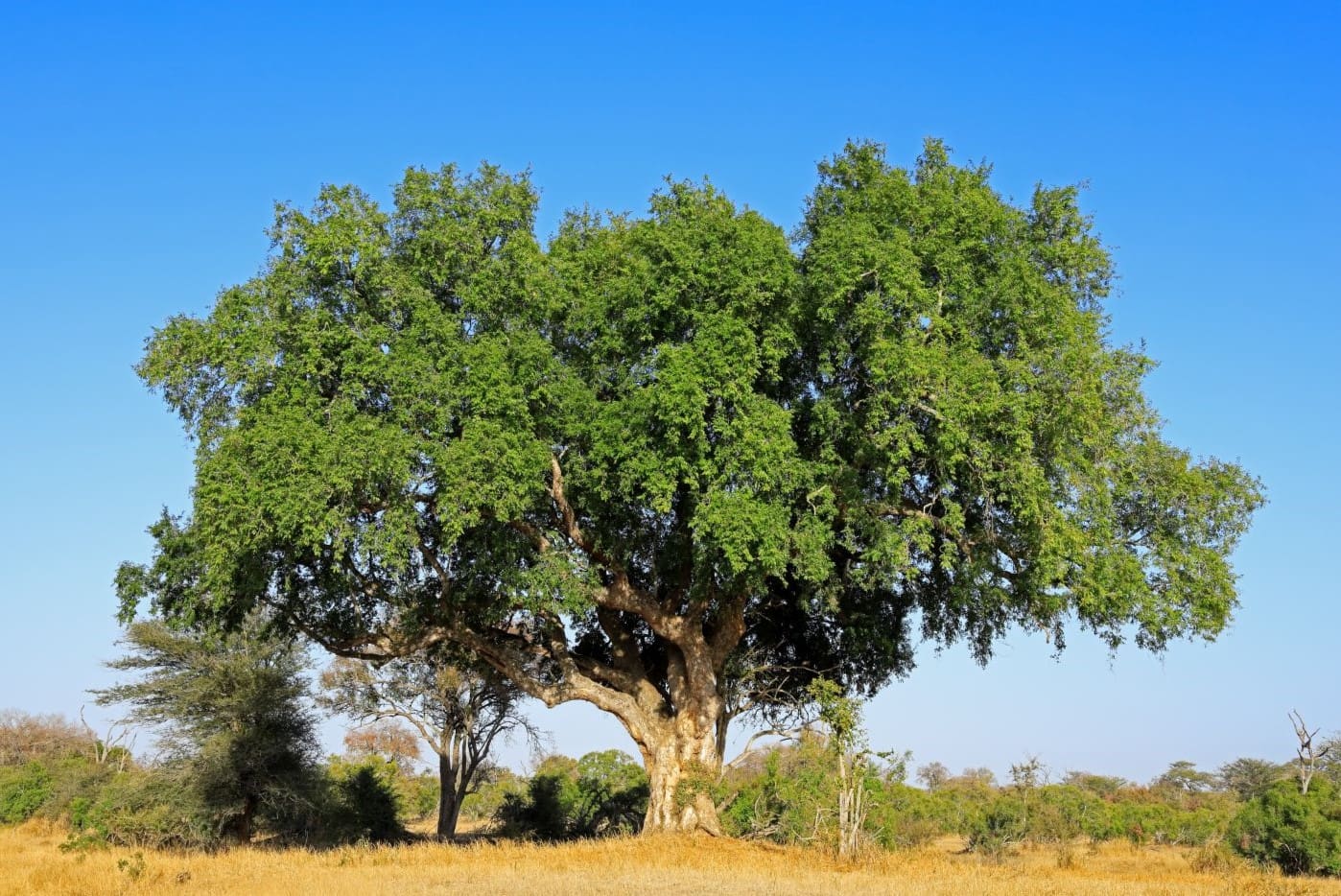
Sycamore fig trees, also known as Ficus sycomorus, are captivating and essential components of various ecosystems. These majestic trees have a rich history, deeply intertwined with human civilization and the natural world. From their cultural significance in ancient times to their ecological contributions today, sycamore fig trees stand as symbols of resilience and interconnectedness. In this article, we will delve into 11 intriguing facts about sycamore fig trees, shedding light on their remarkable attributes and the vital roles they play in the environment. Whether you're a plant enthusiast, a nature lover, or simply curious about the wonders of the natural world, join us on a journey to uncover the fascinating facets of these iconic trees. Let's embark on an exploration of sycamore fig trees, delving into their history, characteristics, and ecological impact.
Key Takeaways:
- The Sycamore Fig Tree is a majestic and ancient species with biblical significance, massive size, and unique fruits, providing shelter and food for various animals.
- This remarkable tree has historical roots, cultural significance, and faces conservation challenges, highlighting the need to protect its resilience and ecological importance.
It Holds Biblical Significance
The Sycamore Fig Tree is mentioned in the Bible, specifically in the story of Zacchaeus, a tax collector who climbed a Sycamore Fig Tree to get a better view of Jesus as he passed through Jericho.
It's a Massive Tree
The Sycamore Fig Tree is known for its imposing size, often reaching heights of 20 to 30 meters, with a broad, spreading crown that provides ample shade.
It Bears Unique Fruits
The tree produces figs that are borne in clusters on long branchlets, and these figs are a vital food source for various animals, including birds and primates.
It Has Historical Roots
The Sycamore Fig Tree has been revered since ancient times, with depictions found in Egyptian tombs and temples, showcasing its enduring cultural significance.
It's Native to Africa and the Middle East
This species is native to a vast geographical range, spanning from Egypt and Israel to Ethiopia and parts of West Africa, thriving in regions with a subtropical climate.
It's a Vital Component of Ecosystems
The Sycamore Fig Tree plays a crucial role in its ecosystem, providing shelter and sustenance for a diverse array of wildlife, including insects, birds, and mammals.
It's a Symbol of Resilience
With its ability to withstand harsh environmental conditions and thrive in diverse habitats, the Sycamore Fig Tree symbolizes resilience and adaptability.
It's Utilized in Traditional Medicine
Various parts of the Sycamore Fig Tree, including the bark and leaves, have been used in traditional medicine to treat ailments such as diarrhea, skin conditions, and respiratory issues.
It's a Source of Economic Livelihood
In some regions, the tree's wood is utilized for furniture and construction, while its fruits contribute to local economies through the production of jams, syrups, and other food products.
It's Associated with Mythology and Folklore
The Sycamore Fig Tree features prominently in folklore and mythology, with tales and beliefs surrounding its mystical properties and spiritual significance in different cultures.
It Faces Conservation Challenges
Despite its cultural and ecological importance, the Sycamore Fig Tree faces threats from habitat loss, deforestation, and climate change, highlighting the need for conservation efforts to protect this venerable species.
The Sycamore Fig Tree stands as a living testament to the interconnectedness of nature, history, and human culture, embodying resilience and providing sustenance and shelter to a myriad of species. Its enduring presence serves as a reminder of the profound impact that trees have on our world, both ecologically and culturally.
The Sycamore Fig Tree, with its sprawling branches and bountiful figs, continues to captivate the imagination and inspire awe, underscoring the timeless allure of this remarkable species.
Conclusion
In conclusion, the sycamore fig tree is a remarkable species with a rich history and significant ecological importance. Its distinctive features, such as the massive size of its leaves and the unique symbiotic relationship with its pollinator wasp, make it a fascinating subject for botanical enthusiasts. The sycamore fig's cultural significance, as a symbol of abundance and sustenance in various civilizations, adds to its allure. Furthermore, its valuable contributions to the ecosystem, including providing shelter and nourishment for diverse wildlife, underscore the tree's vital role in maintaining biodiversity. By understanding and appreciating these 11 sycamore fig tree facts, we gain a deeper appreciation for this majestic plant and its enduring impact on the natural world.
FAQs
What is the significance of the sycamore fig tree in ancient civilizations?The sycamore fig tree holds cultural and religious significance in ancient civilizations such as Egypt and Israel. It is referenced in religious texts and depicted in ancient artwork, symbolizing abundance and nourishment.
How does the sycamore fig tree support wildlife?The sycamore fig tree provides a vital source of food and shelter for a diverse array of wildlife, including birds, mammals, and insects. Its fruit serves as a nutritious food source, while its expansive canopy offers refuge for numerous species.
Was this page helpful?
Our commitment to delivering trustworthy and engaging content is at the heart of what we do. Each fact on our site is contributed by real users like you, bringing a wealth of diverse insights and information. To ensure the highest standards of accuracy and reliability, our dedicated editors meticulously review each submission. This process guarantees that the facts we share are not only fascinating but also credible. Trust in our commitment to quality and authenticity as you explore and learn with us.


